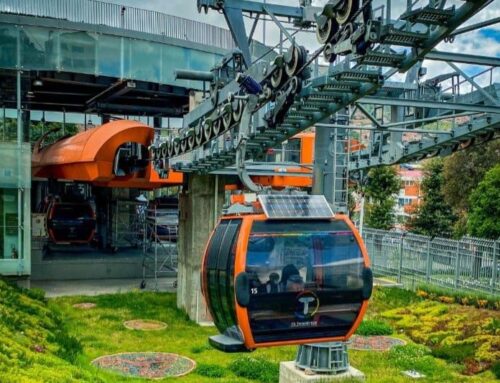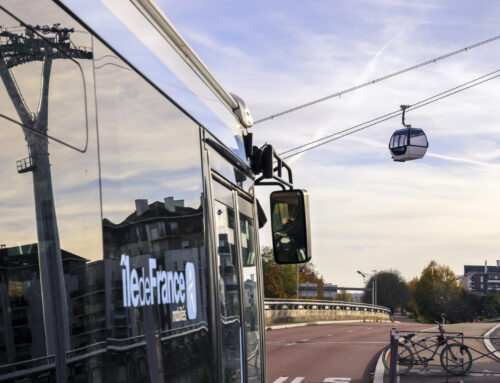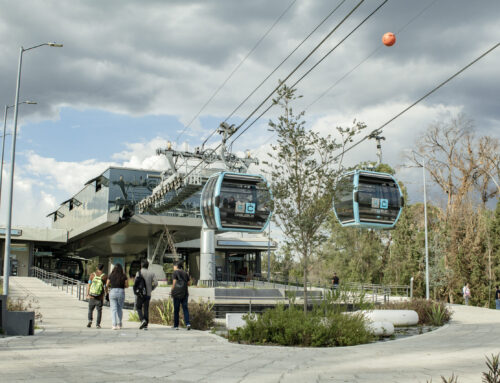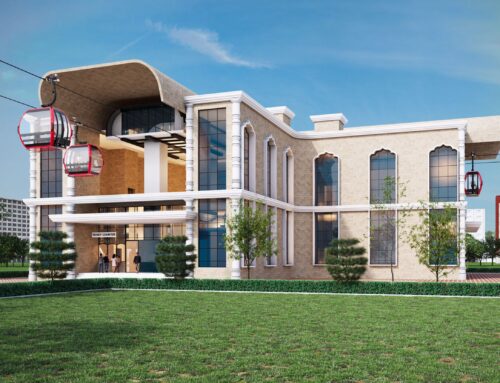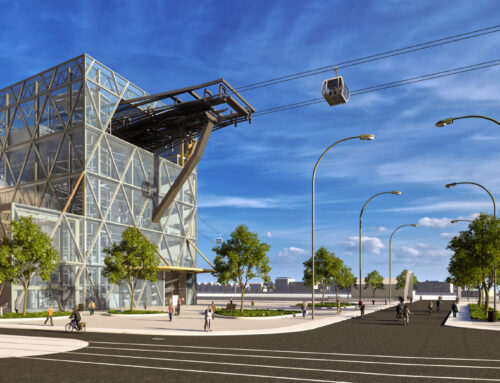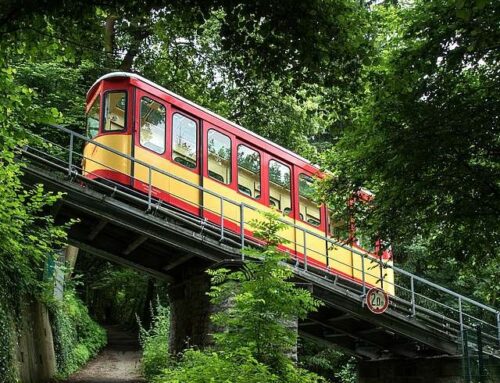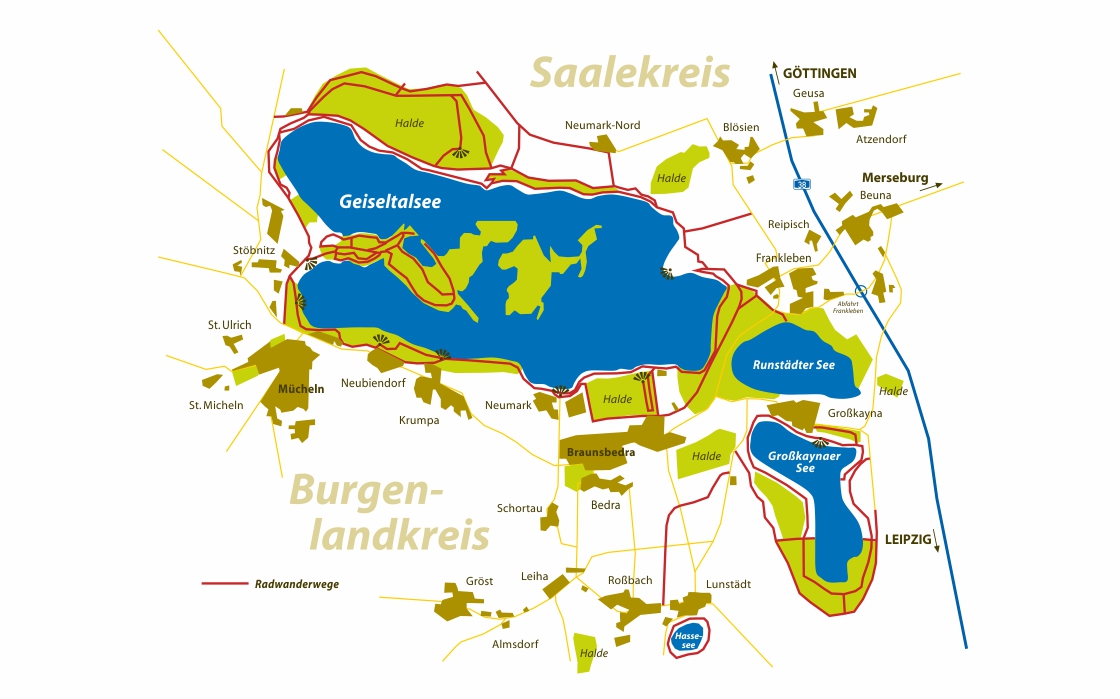
Cities
Suburban cable car: concept for small towns
Like many regions in Germany, the Geiseltal in the state of Saxony-Anhalt is affected by structural change. The mining of lignite is a thing of the past, which has led to a decline in economic growth.
Out of a remnant of the open-pit mining emerged the Geiseltalsee – at almost 19 square kilometers, the largest artificial lake in Germany. This creates new opportunities for tourism, the quality of life for locals, and other economic sectors, especially when the region’s development is accompanied by investments in mobility and digitalization.
Project sponsors and details
For this reason, a project consortium is currently developing an intermodal and integrative suburban cable car concept for the Geiseltalsee. Under the motto “Coal2Cable,” the local public transport system (ÖPNV) of the small town of Mücheln – to which the lake belongs – is to be optimized based on simulations.
The project is led by the Technical University of Ingolstadt; also on board are the company Future Mobility Solutions (FMS), the town of Mücheln, and Merseburg University of Applied Sciences.
The project started in February 2024 and is scheduled to end in January 2027. The project volume is 1.4 million euros, with the German Federal Ministry of Transport covering 75 percent.
Lake cable car
The four to five-kilometer cable car route is planned to run from the harbor in Mücheln across the Geiseltalsee to the vineyard.

Project goals
The project partners aim to jointly develop the framework for an intelligent mobility concept – specifically, an intermodal public transportation system with a suburban cable car at the Geiseltalsee.
The focus will be on simulation-based optimizations using artificial intelligence (AI) methods, as well as data collection, acquisition, and utilization in the context of mobility. Additionally, the project aims to create jobs and increase public acceptance.
Concrete results
“Coal2Cable” will therefore provide a feasibility analysis, including a mobility concept based on qualitative and quantitative analyses. On the other hand, the project will present a traffic simulation with self-developed AI.
For this, framework, structural, and infrastructure data will be integrated into the software, as well as data on buildings, public transport, and transportation means. Additional municipal data and live information will also be used.
The output will visualize the infrastructure and project in 2D and 3D, as well as simulate traffic and emissions. The project leaders expect the AI to provide new mobility concepts, insights into traffic shifting, site planning, and accessibility analyses.
Additionally, an empirical study of citizen acceptance will be conducted. Finally, the consortium will recommend concrete steps for implementation and provide action proposals.
work packages Coal2Cable
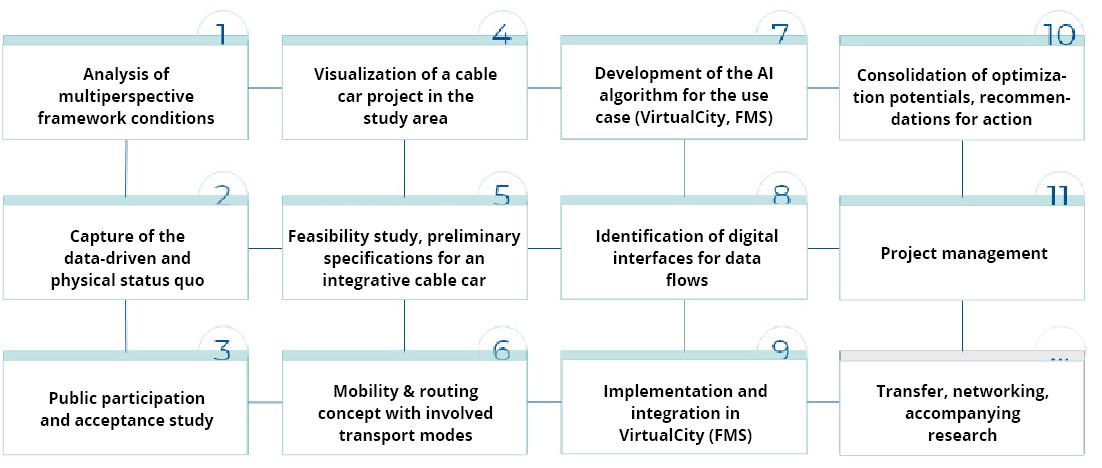
Usage strategy & transfer
The project consortium has high expectations for “Coal2Cable”: the main goal is to build the cable car starting in 2027. Additionally, the project aims to ensure public services in the lignite mining region and to develop a data-driven business model that utilizes AI and digitalization in intermodal public transport with a cable car.
The project further promises to provide a guideline and an operational model for similar cable car projects, publications and data for research and education, as well as new partnerships and networks for future suburban cable car projects.
